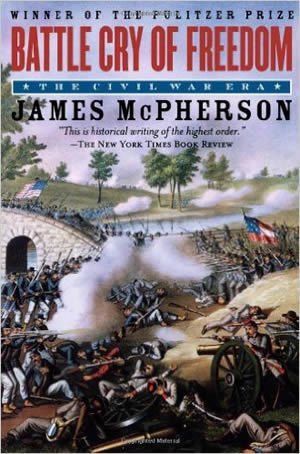

The third movement is the boys marching again - some of the old men would join in and march as fast - to “Shall We Gather at the River.” Most of the second movement, quieter and more serious, moves around an old favorite hymn while the accompaniment reflects the outdoor sounds of nature on those summer days: the west wind in the pines and oaks, the running brook. The first movement was suggested by an actual happening: the organist’s postlude practice and the boys’ fast march got to joining in each other’s sounds, the loudest singers singing wrong notes. Of the Fourth Sonata (“Children’s Day at the Camp Meeting”): “There was usually only one Children’s Day in these summer meetings, and the children made the most of it - often the best of it. The tonality throughout is supposed to take care of itself.”
#Battle cry of freedom violin free
The last movement is an experiment: the free fantasia is first the working-out develops into the themes, rather than from them the coda consists of the themes for the first time in their entirety and in conjunction. The second movement may represent a meeting where the feet and body, as well as the voice, add to the excitement. The first movement is a kind of magnified hymn of four different stanzas, all ending with the same refrain. The tunes used or suggested are Beulah Land, There’ll Be No More Sorrow, and Every Hour I Need Thee. Of the Third Sonata: “An attempt to suggest the feeling and fervor - a fervor that was often more vociferous than religious - with which the hymns and revival tunes were sung at the camp meetings held extensively in New England in the ‘70s and ‘80s.

The hymns and actions at the farmers’ camp meeting, inciting them to ‘work for the night is coming.’” The second movement, a mood when ‘The Old Oaken Bucket’ and ‘Tramp, Tramp, Tramp, the Boys are Marching’ would come over the hills, trying to relive the sadness of the old Civil War days. “The first movement may, in a way, suggest something that nature and human nature would sing out to each other - sometimes. Of the First Sonata: “In part a general impression, a kind of reflection and remembrance of the peoples’ outdoor gatherings in which men got up and said what they thought, regardless of consequences. Ives offered characteristically picturesque comments about three of the sonatas. Essentially, Ives invented this musical form, which is the one he favored in his maturity. Such pieces begin with subtle suggestions and developments of musical fragments that hint at a pre-existent melody, then gradually work toward a culmination in which the “borrowed” melody is revealed in its simple entirety, usually with climactic effect. Peter Burkholder, in his magisterial study All Made of Tunes: Charles Ives and The Uses of Musical Borrowing (1995). The term was introduced by the Ives scholar J. Sonata 2, however, has such titles (“Autumn,” “In the Barn,” and “The Revival”), and Sonata 4 is subtitled “Children’s Day at the Camp Meeting.”Ī word about the “cumulative form” that crops up in so many movements of these sonatas (the first and last movements of Sonatas 1 and 2 and all the movements of Sonatas 3 and 4). Sonatas 1 and 3 are basically abstract, with no specific extra-musical movement titles. Ives accepted the traditional fast-slow-fast pattern of movements in Sonatas 1 and 4, but Sonatas 2 and 3 are slow-fast-slow, a non-traditional, Ivesian pattern first tried out in his Third Symphony. Nevertheless, each sonata has its own characteristics. Each has three movements each includes one or more movements in “cumulative” musical form each is tinged with the music of American Protestant hymnody and ends with a finale based on a hymn-tune and all are comparatively “easy” pieces (by Ives’s standards). More than any other similar cluster of his compositions in a single genre, these sonatas all seem to be citizens of the same musical world. Among Ives’s chamber works are multi-movement “sets” for small ensembles, string quartets, piano sonatas, and other pieces.īetween about 19, Charles Ives, in his mid-thirties and early forties, at the peak of his composing career, completed four sonatas for violin and piano.

A life-insurance executive professionally, he created an extraordinary body of compositions only later recognized as a treasurable legacy. Ives was unique for his time as an American composer who wrote works in the “classical-music” tradition but also drew on American popular and traditional music idioms. Charles Ives, a New Englander, was taught first by his father, then at Yale by the German-trained Horatio Parker.


 0 kommentar(er)
0 kommentar(er)
